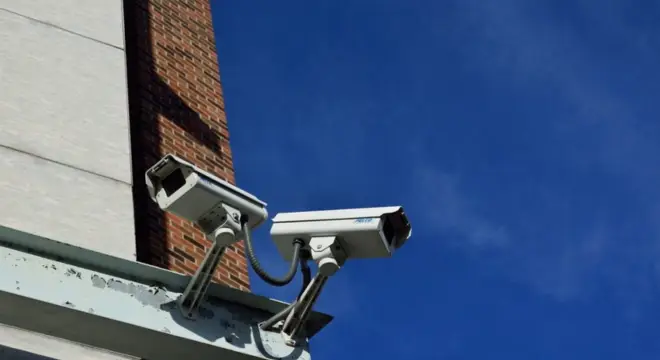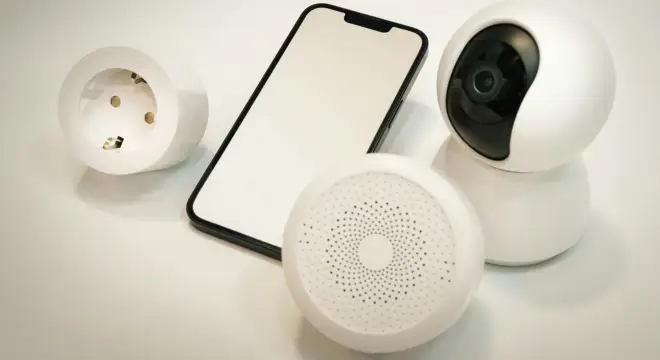Protecting Smart Homes: 10 Cybersecurity Tips Every Homeowner Needs
When we think about home security, our minds often go straight to locks, alarms, or cameras. But the truth is, today’s biggest risk to your home isn’t always someone breaking through the front door—it’s someone slipping in through your Wi-Fi.
I’ve seen families shocked when their “safe” smart gadgets were quietly exposing them. Imagine this: you’re away on vacation, you open your phone to check the doorbell camera, and instead you find the feed isn’t loading because someone else has already hijacked it. Scary, right? That’s the kind of reality we’re living in with connected homes.
And it’s not just about cameras. Every smart bulb, thermostat, or voice assistant you add is like opening another tiny door for hackers. A weak password on your router, a missed software update, or clicking the wrong email link—that’s all it takes to give someone access to your private world.
But here’s the good news: protecting your smart home from cyberattacks isn’t rocket science. You don’t need expensive tools or a computer science degree. With the right steps, you can lock down your devices just as easily as you lock your front door.
I’ll walk you through how hackers actually target smart homes, what mistakes most people don’t even realize they’re making, and how you can fix them today.
So let me ask you: if someone tried to “test” your smart home security tonight, would you be confident enough to bet on it?
What Makes Smart Homes a Hacker’s Playground?

Here’s the thing about smart homes: they’re designed for convenience, not for security. When you buy a new smart speaker or light bulb, you’re thinking about comfort. Hackers, on the other hand, see it as another unlocked window.
Every connected device is a mini-computer. And just like your laptop, it can be hacked if it’s running outdated software or still using the default password. The real danger is that these devices are all linked. If one is compromised, the attacker can often move deeper—jumping from your smart TV to your router, and from your router to your cameras or even your laptop.
Most guides stop at “use strong passwords.” But the truth is, the risk comes from the ecosystem effect—all your gadgets talking to each other. That’s the playground hackers love.
And if you’re planning to set up a home with kids around, balancing convenience and safety becomes even trickier—our guide on how to build a kid-friendly smart home with AI tech covers that in detail.
Types of Cyber Threats That Target Smart Homes
Let’s break down the most common ways hackers go after smart homes:
- Hackers & intruders. They break into devices like a burglar—but digitally. Once inside, they might spy on your camera feeds or lock you out of your own system.
- Phishing emails. Sometimes it’s not your device—it’s you. Click one wrong link, give away login details, and suddenly your whole smart home is wide open.
- Identity theft. Many smart devices collect personal data. If stolen, that data can be used to open accounts or even mess with your finances.
- Password attacks. Hackers use brute force or simply guess factory-set logins that many people never bother to change.
- DoS/DDoS attacks. Imagine your entire network being flooded until it crashes. That’s what happens when attackers overload smart hubs or routers.
The scary part? Some attacks aren’t even about stealing money. They’re about control—turning your devices into “bots” to attack others. You’d never know your thermostat was part of a global cyberattack.
Interestingly, smart homebuyers often overlook these basics too—yet during my research I found that there are at least 5 things smart homebuyers still control, even in a crazy market. Security decisions like Wi-Fi setup actually top that list.
Step-by-Step Smart Home Protection Strategy
So how do you defend against this? You don’t need to reinvent the wheel. You just need to get the basics right and build a habit of treating your smart devices with the same caution you treat your front door.
Step 1: Audit Your Devices
Write down every connected gadget in your home—from locks to bulbs. You can’t protect what you don’t know exists.
Step 2: Secure Your Wi-Fi & Router
Your router is the gateway. Change the default password immediately, turn off risky features like WPS, and, if possible, set up a separate Wi-Fi network just for smart devices. This way, if your smart light gets hacked, it won’t automatically expose your laptop or phone.
Step 3: Strengthen Authentication
Unique passwords for each device are non-negotiable. If you’re worried about remembering them, use a password manager. And enable two-factor authentication (2FA) wherever you can.
Step 4: Keep Everything Updated
One of the simplest but most powerful defenses is regular updates. Hackers prey on old software. A Vivint guide on protecting homes from cyberattacks even points out that many attacks happen because people skip firmware updates or never bother to change default settings.
Something as basic as updating your router or doorbell camera can shut down a hacker’s easiest route in.
Step 5: Use Firewalls, VPNs, and Monitoring
Add another layer of defense with a firewall and consider using a VPN if you access devices remotely. Some advanced users even monitor network traffic for unusual spikes—that’s often the first clue something is wrong.
The key here isn’t perfection. It’s about raising the bar high enough that hackers move on to an easier target.
I often share quick security reminders and updates whenever new threats pop up. If you like short, straight-to-the-point tips, you can catch them on WhatsApp—it’s like having a mini security checklist in your pocket.
Quick Checklist for Readers

Before you move on, here’s a rapid-fire audit you can run today:
- Changed the default password on your router?
- Separate your IoT devices on a guest network?
- Updated your smart devices in the last 30 days?
- Enabled 2FA on accounts where possible?
- Deleted any smart apps or devices you no longer use?
If you said “no” to more than two of these, your smart home is an easy target.
So, where do you stand—do you feel your smart home is locked down, or did that checklist make you realize you’ve got some work to do?
The Future of Smart Home Security
We’re heading toward a world where almost everything at home will be connected—fridges that order groceries, mirrors that track your health, even toilets that send health data to your doctor. Cool? Yes. Safe? Not always.
The good news is that security is slowly catching up. Device makers are now baking encryption into their products, and governments in countries like the U.S. and U.K. have started pushing for “cyber hygiene” laws (like banning default passwords). AI-driven monitoring is also on the rise—it can flag suspicious activity before you even notice something’s off.
But here’s the catch: technology alone won’t save you. The future of smart home security is a partnership—you + the tech. If you don’t play your part, even the most advanced system can fail.
In fact, many homeowners forget to inspect the small but critical details when adopting new devices—10 things every smart homebuyer inspects but most forget is a reminder of how easy it is to miss the essentials.
Final Takeaway
Here’s the bottom line: a smart home should make your life easier, not riskier. But convenience always comes with a price—and in this case, the price of ignoring cybersecurity is too high.
The scary stories we covered? They’re real. The simple defenses we listed? They work. And the choice? That’s yours.
So let me leave you with a question: if someone tried to hack into your smart home tonight, would you be ready—or would you find out only when it’s too late?
If you’re serious about making your home smarter and safer, don’t stop here—explore more guides on BuildLikeNew’s Home Security category. You’ll find practical strategies you can apply right away.
Disclaimer: This article is for informational purposes only and should not be taken as professional cybersecurity advice. Always consult trusted experts or official sources before making decisions about your smart home security. The author and publisher are not responsible for any losses or damages resulting from actions taken based on this content.


